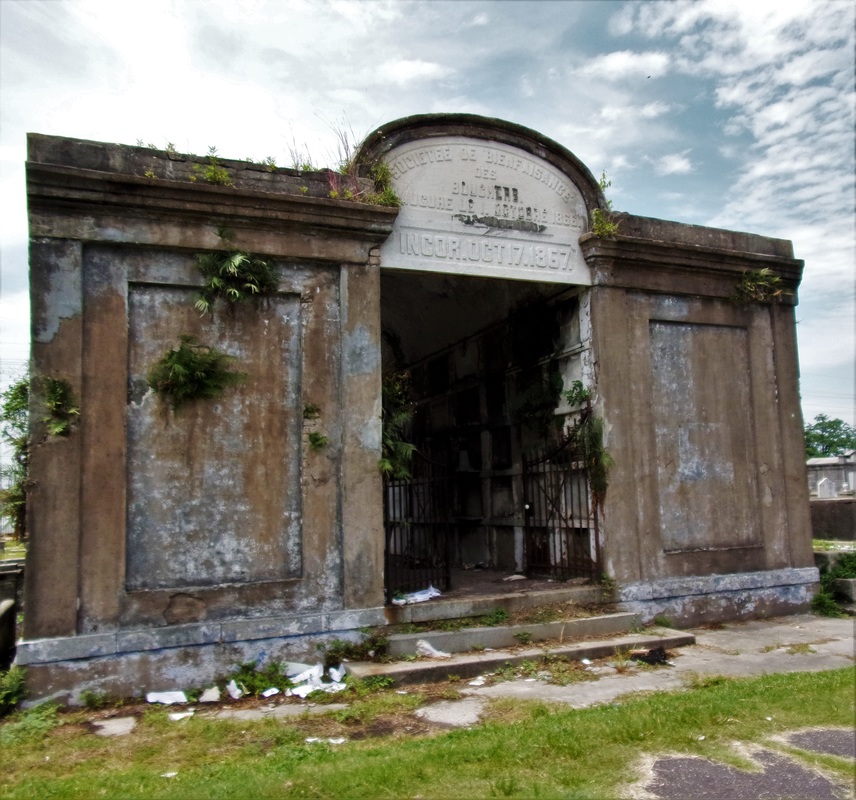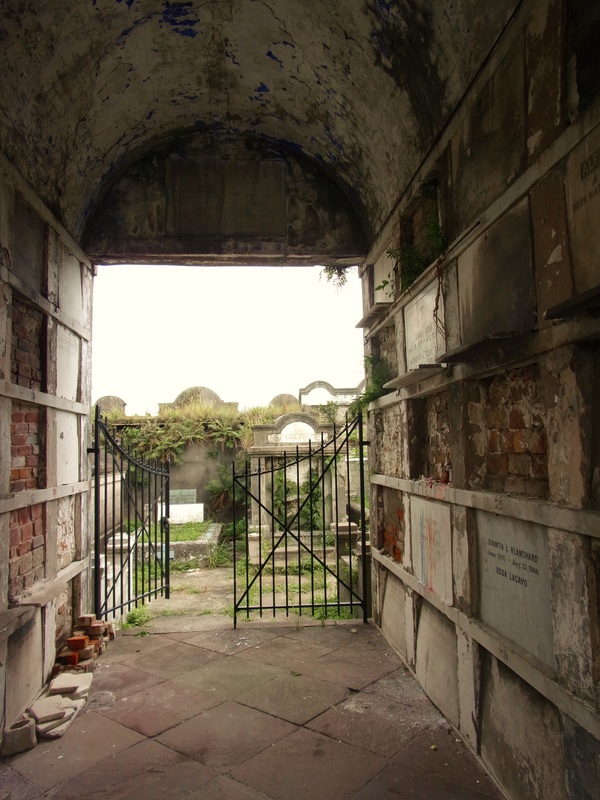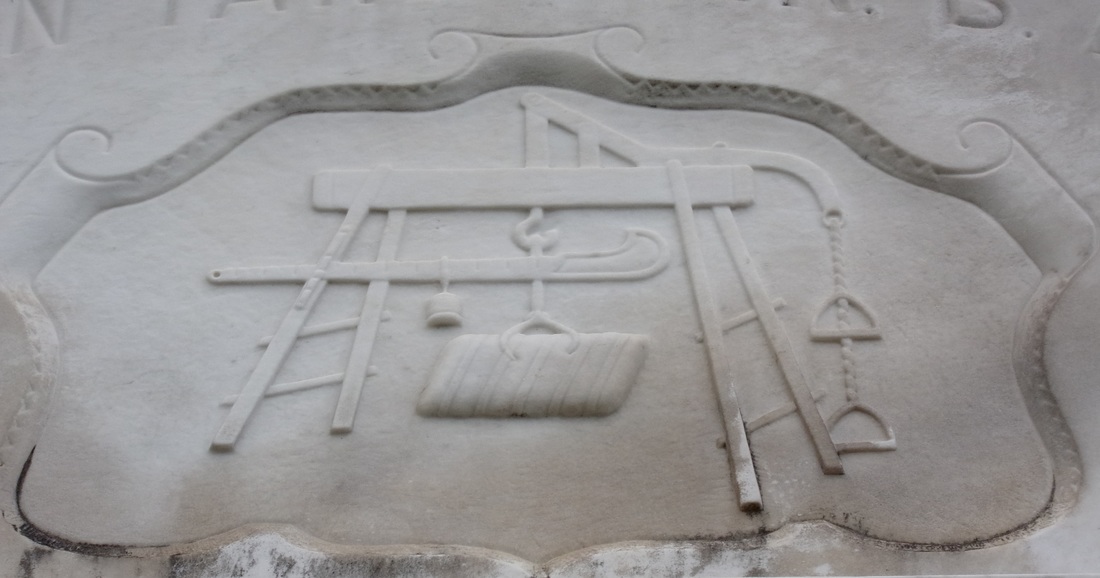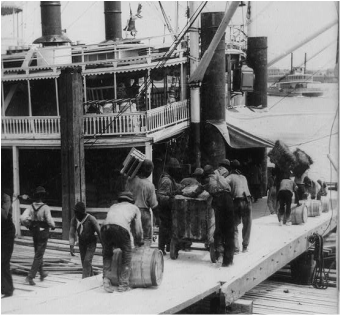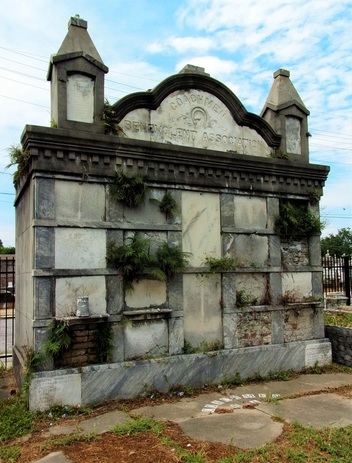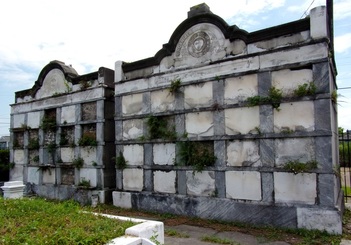|
Labor Day was established in the 1880s as a holiday in which to appreciate and remember the contributions of organized labor in our communities. New Orleans is not always readily associated with labor history, but one walk through a quiet, historic cemetery and the significance of workingmen’s societies is clear. Established in 1850 along Washington Avenue at Saratoga Street, Lafayette Cemetery No. 2 is the site of many different expressions of the drive of individuals to organize and collect for the greater benefit. Social aid societies such as the Société Française de Bienfaisance et D'Assistance Mutuelle built tombs for their members here – tall, wide, multi-vault tombs into which numerous burials could be made at once. Members of these societies paid monthly or yearly dues, the benefits of which included a funeral, tomb burial, and often monetary support for widows and orphans. The most prominent of these societies in both history books and the landscape of Lafayette Cemetery No. 2 is that of the Butchers’ Benevolent Society, who contracted James Hagan and L.E. Lohes to build their eighty-seven vault tomb in Square 19. It cost $5,000 and was completed in 1868.[1] The Butchers’ Benevolent Society charged its members each $1 in the event of a member’s death, the proceeds of which were given to surviving family. If any member failed to attend the burial of the deceased butcher, he was fined fifty cents (one dollar for board members). Members attending a butcher’s funeral were prohibited from smoking cigars and cigarettes while processing to the tomb, but were allowed to do so when processing away.[2] The Butcher’s association tomb is distinctive, but is not nearly the most significant aspect of the society’s history. Shortly after the dedication of the tomb, the Butchers’ Benevolent Association brought suit against the City of New Orleans in a case that challenged the interpretation of the newly-drafted Fourteenth Amendment. The Slaughterhouse Case became a landmark Supreme Court case in 1873, and continues to be argued and revisited today. The Slaughterhouse Case challenged the language of the Fourteenth Amendment, which was intended to establish the rights of emancipated slaves as the same rights, privileges and immunities of all American citizens. Beyond the Butchers’ tomb, the exercise of these rights by African American laborers is visible in high relief across the landscape of Lafayette Cemetery No. 2. African-American Labor Societies Along the Sixth Street and Loyola Street fences of Lafayette Cemetery No. 2 are numerous society tombs dedicated to the members of African American labor organizations. Many of them were associated with the transport, weighing, and moving of goods along New Orleans’ waterfront: the Coachmen Benevolent Association, the Teamsters and Loaders Union Benevolent Association, the Cotton Yardmen No. 2, and others. In the late 1870s and through the 1880s, these associations formed to protect the rights and opportunities available for African American workingmen. Organizations were racially segregated but frequently worked in tandem with white organizations. The Cotton Yardmen Benevolent Association No. 2 is an example of this. From Eric Arnesen’s Waterfront Workers of New Orleans: “Leading the new union drive was the white Cotton Yardmen’s Benevolent Association formed in December 1879 under the direction of Democratic party ward boss and Administrator of Police, Patrick Mealy; two years later it boasted a membership of 986 and a bank account of $13,000. Black cotton rollers, with the assistance of the leaders of the white yardmen, formed the Cotton Yardmen’s Benevolent Association No. 2, in January 1880, and both organizations agreed to work ‘in full harmony’ with each other. In April 1880, the black teamsters and loaders established their benevolent association, as did coal wheelers the following month…In September 1880, cotton weighers and reweighers formed a mutual aid association that aimed to secure a uniform system for weighing and re-weighing cotton and to regulate wages and arbitrate disputes.[3]” Organizations like those represented in Lafayette Cemetery No. 2 navigated the twin hardships of labor injustice and racial prejudice. Yet the establishment of such unions was accomplished, despite acute awareness of the possibility of violence. Events like the 1887 Thibodaux Massacre and other bloody labor conflicts would have surely weighed upon laborers as they worked toward fair treatment.
While these treatments appear to offer a maintenance-free solution to crumbling tombs, such materials can be harmful to the soft brick beneath. Of the twenty-two society tombs of Lafayette Cemetery No. 2, only a few are not abandoned, and active decay is the dominant force.
This Labor Day, we take part in the intention of this memorial architecture and appreciate the achievements that the society tombs of Lafayette Cemetery No. 2 represent. For further reading: Daniel Rosenberg. New Orleans Dockworkers: Race, Labor, and Unionism 1892-1923. New York: SUNY Press, 1988. Eric Arnesen. Waterfront Workers of New Orleans: Race, Class, and Politics, 1863-1923. Chicago: University of Illinois Press, 1994. Steve Striffler and Thomas Jessen Adams. Working in the Big Easy: The History and Politics of Labor in New Orleans. Baton Rouge: University of Louisiana Press, 2014. Paul D. Moreno. Black Americans and Organized Labor: A New History. Baton Rouge: LSU Press, 2008. PBS: Landmark Supreme Court Cases related to Labor. New Orleans Dockworkers and Unionization, Wikipedia New Orleans 1892 General Strike, Wikipedia [1] New Orleans Republican, November 2, 1868, 1; “The Butchers’ Benevolent Association,” New Orleans Crescent, October 13, 1868.
[2] Butchers’ Benevolent Association, Constitution et règlements de la Société de bienfaisance des bouchers de la Nouvelle-Orléans (New Orleans: Imprimerie Franco-Americaine), 1883, Articles Fourteen and Sixteen. [3] Arneson, Eric, Waterfront Workers of New Orleans: Race, Class, and Politics, 1863-1923 (Chicago: University of Illinois Press, 1994), 61-63.
5 Comments
Clark Forrest
2/7/2017 01:13:38 pm
Ms. Ford,
Reply
2/8/2017 12:42:29 pm
Dear Clark,
Reply
9/28/2019 03:03:31 pm
As usual , EXCELLENT information!
Reply
Virginia Williamson
5/7/2022 05:08:40 am
I have family interred here. I want to visit again, check my graves and leave flowers. My husband and daughter will be with me. I am in an electric wheelchair. Will we be safe? Do we need a guard?
Reply
Emily Ford
5/9/2022 07:55:08 pm
Hi Virginia! Most families do not feel unsafe visiting Lafayette Cemetery No. 2, but if you have concerns please reach out to the City of New Orleans Division of Cemeteries at (504) 658-3672. They may be able to arrange for someone to visit with you to help you feel more comfortable.
Reply
Your comment will be posted after it is approved.
Leave a Reply. |
About the Author:Emily Ford owns and operates Oak and Laurel Cemetery Preservation, LLC. Archives
November 2019
Categories
All
|
- About
-
Restoration
- Services
-
Portfolio
>
- Turning Angel Statue, Natchez, MS
- Ledger Monument, Baton Rouge, LA
- Pyramid Statuary, New Orleans, LA
- Bronze and Granite Monument, Carville, LA
- Box Tomb, New Orleans, LA
- Vernacular Concrete Monument, Pensacola, FL
- 1830s Family Tomb, Covington, LA
- 1850s Family Tomb, New Orleans, LA
- 1880s Family Tomb, New Orleans, LA
- Headstone and Monument Restorations, Pensacola, FL
- Society Tomb, New Orleans, LA
- Education
- Blog
- Contact
|
Oak and Laurel Cemetery Preservation, LLC is a preservation contractor in New Orleans, Louisiana, specializing in historic cemeteries, stone conservation, educational workshops and lectures. Oak and Laurel serves the region of the Southeastern US.
|
QUICK LINKS |
CONNECTNew Orleans, Louisiana
restoration@oakandlaurel.com (504) 602-9718 |
Proudly powered by Weebly


